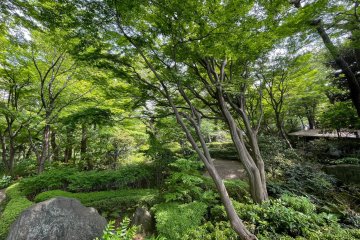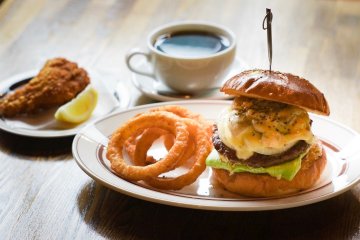Shinagawa is one of Tokyo’s largest hubs and has a history deeply rooted in culture. During the Edo period, Shinagawa was the first of over fifty stations of the Tokaido, a route that travelers would take from Tokyo to Kyoto. In addition to maintaining itself as a transportation hub with shinkansen and airport access, Shinagawa has established itself as a center for traditional Japanese cultural experiences.
This year Shinagawa collaborated with numerous local partners and tourist associations (including Japan Travel) to create and host the very first “Shinagawa Culture Event”. Local culture experts, artists, masters and volunteers welcomed people from all over the world to an event with activities as diverse as the participants nationalities.
Activities included the following:
Gagaku Performance
- Traditional Shinto music often performed at temples and shrines
- Originated from the Kyoto imperial court
- Consists of a band of wind, string, and percussion instruments unique to Japan
Zazen (Zen Meditation)
- Purpose: remove all thought and learn to control interference from the outside world
- Focus on a stable physical and mental posture to achieve peace and awareness of oneself
Koto Performance
- Traditional 13 string long wooden instrument - the national instrument of Japan
- Made of kiri wood and played using 3 finger picks
- Expert teachers played a variety of classic and modern songs and taught volunteers the basic strings and simple songs in hands-on demonstrations
Purification (Oharai) @ Kamishinmeitenso Shrine
- Purification performed at Shinto ceremonies to purge uncleanliness and sins, as well as exorcise unwanted spirits
- Performed with onusa, a wooden stick with paper wand under the instruction of a Shinto priest
- May also be performed by washing oneself with water
Shrine Maiden Dance (Miko Kagura)
- Miko are young females who work at Shinto shrines and wear traditional clothing
- Assist priests in ceremonies and rituals often performed through dance
- Miko-kagura: a dance performed to send messages to “kami”, or gods, at Shinto shrines
Shaved ice (Kakigori)
- Popular Japanese dessert served at festivals during the summer
- Similar to snow cones but fluffier and typically hand made by traditional devices
- Main ingredients are ice, syrup, and condensed or evaporated milk
Karate
- Originated from indigenous martial arts in Okinawa
- Practiced for self-development, self-defense, and as an expression of art
- Will be in the Olympics for the first time in 2020
Tile Smash (Kawara-wari)
- Artistic expression used to show level of skill and precision in karate
- Originally use roof tiles, now sometimes concrete blocks and wood are used
- Hands-on demonstrations available for volunteers who wished to try their skill
The activities were hosted on the traditional streets of Shinagawa. The central gathering point was the Kamishinmeitenso Shrine where several events were hosted both within the shrine and in neighboring buildings. Shinagawa’s local mascot Cinnamoroll, (https://www.sanrio.co.jp/character/cinnamon/) a Sanrio character, was also there to make an appearance to welcome the group and play with the kids.
The Shinagawa Culture Event provided tourists, foreign residents, and even local Japanese an opportunity to see and partake in traditional activities and performances. These exclusive experiences (many performed for the first time in Shinagawa) may soon be available to all so be on the lookout for culture events and activities via Shinagawa and Japan Travel.













